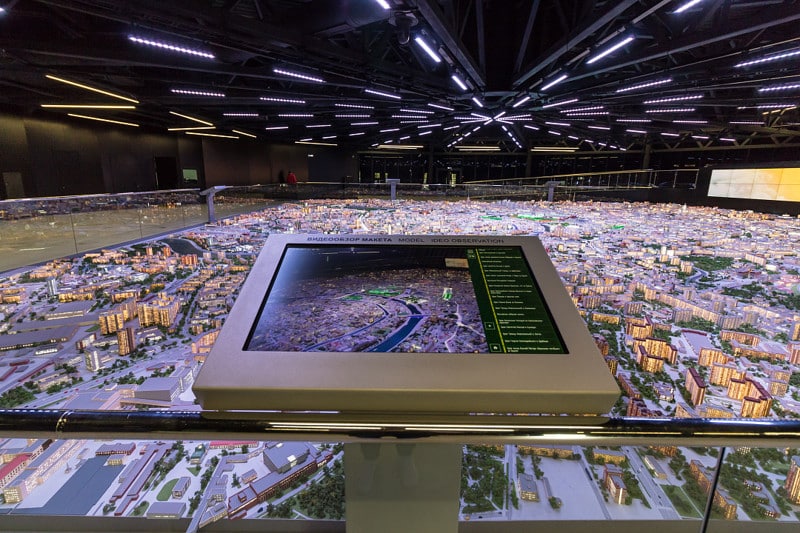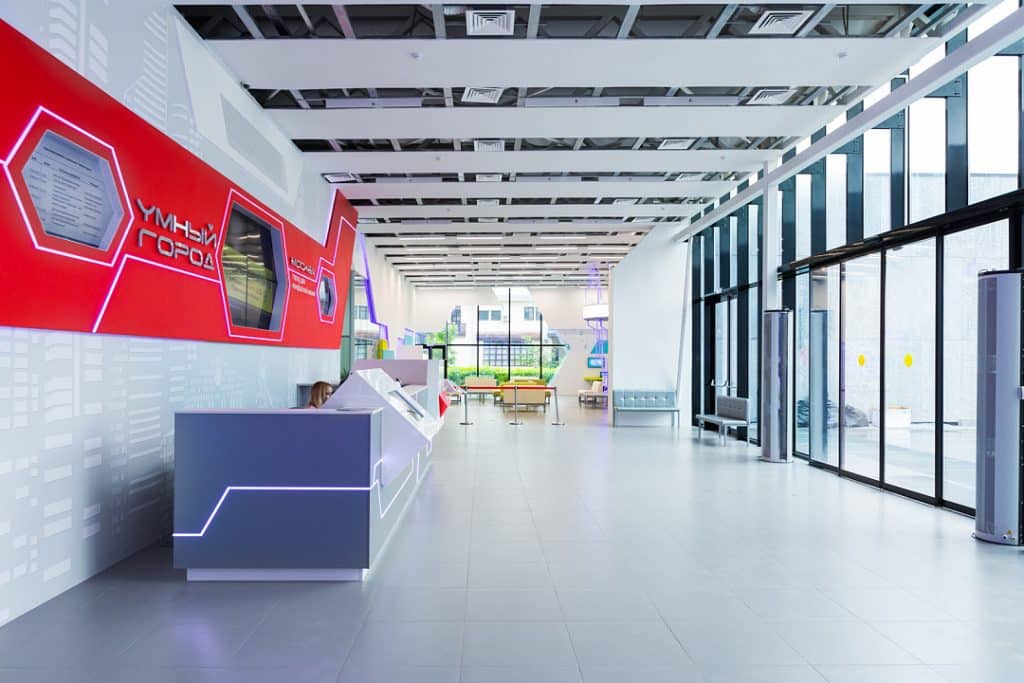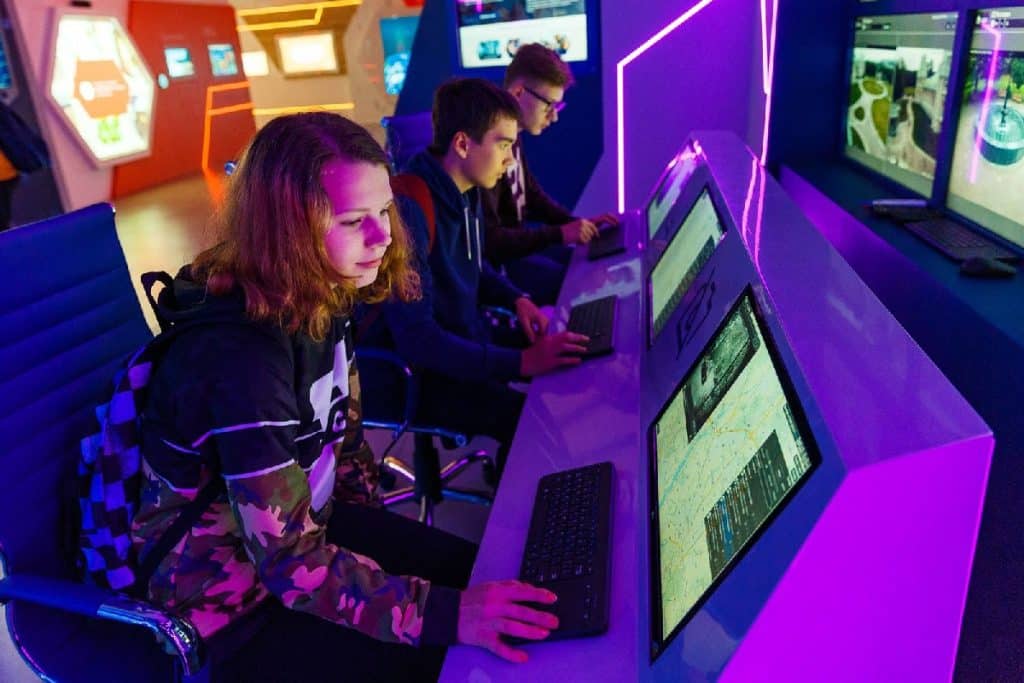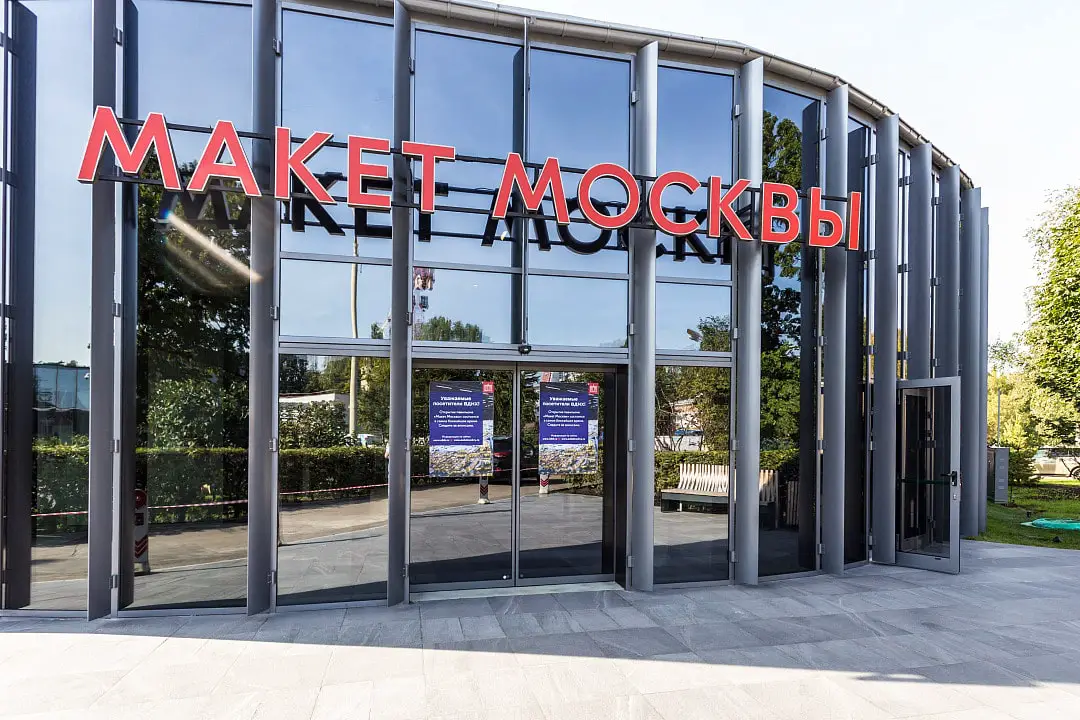VDNKh (ВДНХ) is a permanent general purpose trade show and amusement/leisure park in Moscow. The park first opened in 1939 with ten pavilions, and has since expanded to over 200 buildings. A friend and I saw two exhibits during our time at VDNKh: the Moscow Mockup (Макет Москвы) and Smart City (Умный город), both new displays focused on modern Moscow and showcasing how the city is developing.
Precisely as advertised, the Moscow Mockup is a miniature mockup of Moscow. There are six different video kiosks that allow you to view the mockup via cameras you can control to zoom in on different areas of the city. Each camera can access each part of the city, just from different angles. The kiosks each feature identical touchscreens that allow you to select a point of interest and automatically hone in on that location.

A stage on the north side of the mockup allows you use touchscreens to explore various metro, train and road improvements planned through 2020. Unfortunately, this showcases delays as much as the planned development: at time of visit there were less than four weeks left in 2017; however, several stations listed as due to open in 2017 are still not on the map.
Another downside is that the touchscreens aren’t very responsive. If you’re curious, you’re probably better off finding the information online and/or looking at Moscow via Google Earth.
We then moved to Smart City. As we walked in, we were greeted by a woman who explained the registration process: you enter your name, birthday, residency status and email on an iPad form. Take a selfie, and a machine will then assign you a card (sans picture). Then, simply check your coat and swipe the card to enter the main hall. No photography is permitted whatsoever.
Upon entering, the first exhibit one notices consists of some computers connected to thousands of surveillance cameras throughout Moscow. With a few simple clicks, you can zoom in on a neighborhood, choose a camera and see what’s happening in real time. They don’t show any cameras inside buildings (that I found), but you can see various vantages of the MGU dorms, campus and surrounding areas. My friend found a camera that allowed him to see people walking in and out of his apartment building. At one point, I pulled out my phone to text a friend. An employee immediately zoomed over to me and told me to stop taking photos, relenting only after I showed her my SMS screen.

Also on display is facial recognition technology to compile a montage of…you. No swipe is required – it gathers the footage all on its own, using surveillance footage of you walking into the building, the photo you took during registration and the footage of you at that moment. An algorithm then tries to guess your age and gender. It guessed my age correctly, but said my friend was a couple years younger than he actually is.
Moving on, you round a corner where a woman guides you through the future of education. After choosing a lunch plan for a hypothetical offspring via touchscreen kiosk, including the total amount of money they’re allotted, how much they can spend per day and specific foods they’re forbidden from purchasing, she brought us to a 3D printer and explains that Russian children will be trained to use them in future classrooms.
Again, however, many of the displays, while presenting a very modern image, also show that technology and projects don’t always work as intended. The woman said that she couldn’t give a demonstration of the 3D printers because supplies are expensive and the printers are slow. Some of the remaining stations at Smart City allowed you to watch the news, track construction and utility vehicles in Moscow and try out different virtual reality programs. However, the vehicle tracker displayed “NO DATA” for a few different specs, and two of the virtual reality stations weren’t functioning.

Though Moscow Mockup and Smart City have some interesting points, the lasting impression they left was one of an imagined bright future. Rather, I was left with a slightly more dysfunctional, dystopic vision of a city. Russia recently won an international US-government sponsored competition for facial recognition software, and it’s no secret that, especially in modern metropolises, Big Brother is always watching – regardless of what country you’re in. Nevertheless, it’s one thing to objectively know you’re being tracked, and another to see the technology in action. Other kiosks, however, were simply underwhelming: if supplies for VDNKh’s 3D printer are too expensive, how can one expect the average school to buy and maintain such a machine? Plus, the virtual reality sets were the same quality as the set my 10-year-old niece got for Christmas last year.
We left, finally, and went to find some warm ponchiki (пончики, Russian funnel cake donuts). A few steps away we saw some utility trucks and laughed – those hadn’t been displayed on the computers.
The Moscow Mockup and Smart City
Prospect Mira 119, building 75, Moscow, 129223
Tuesday – Sunday 11:00 – 19:00
Free entry
vdnh.ru







